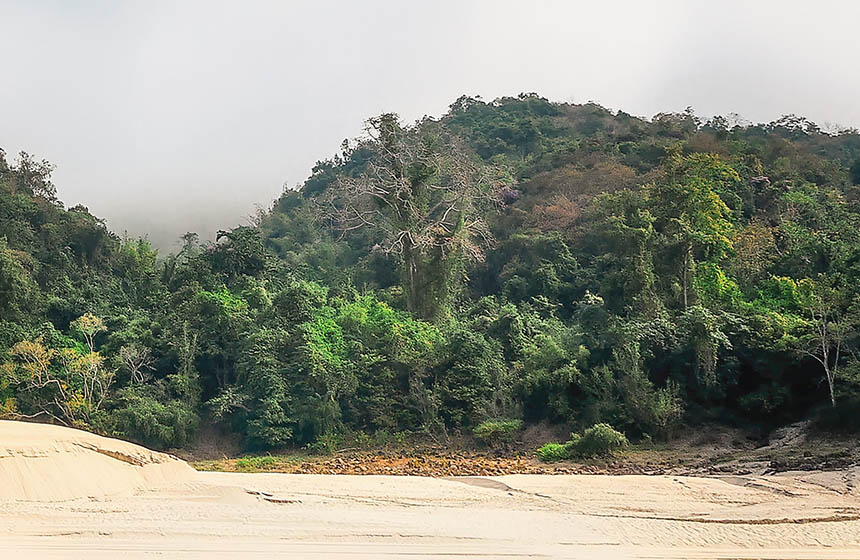Program to Restore the Delaware River Basin
The Delaware River Basin Restoration Program is a collaborative network of organizations working to improve the health of the Delaware River basin and improve equal access to nature in surrounding communities.
Nature-based Intervention:
The Delaware River Basin Restoration Program focuses its interventions on improving wildlife habitat, water quality, reducing flood damage and recreation access. These interventions have taken many forms, such as the removal of the Columbia Dam on Paulins Kill River, a tributary of the Delaware river. This removal was the accompanied by a habitat restoration for the surrounding area. Many of their projects focus on habitat restoration and connectivity at all levels of the river basin. This includes riparian habitats, but also supporting forest restoration and natural floodplain regeneration. At the mouth of the river’s tributary projects focus on marshland restoration to prepare for storm surge impacts in the surrounding areas. Interventions also focus on adding equitable recreation sites along the course of the river.
Overview of context and outcomes:
The Delaware river and its tributaries cover a wide range of habitats, levels of human occupation and 4 states along its course to the sea. This project represents a coordinated network of interventions designed to improve the overall health of the river basin. The project has been widely viewed as a success for its ability to coordinate a complex network of stakeholders, interventions, and organizations in order to facilitate improvements across the range states. In recognition of this success in 2022 they were awarded additional funding to support the expansion of the project into 12 more interventions.
Case effectiveness on
Climate change
The project includes efforts to reforest shorelines and restore coastal meadows along the watershed. These improved habitats are likely to be natural carbon sinks within the region.
The project works to restore salt marshes and coastal estuary ecosystems which can help communities along the Delaware river improve their adaptive capacity for dealing with flooding and storm surge.
Ecosystem health
Ecological effect: PositiveThe Delaware river basin represents an important regional hub of species richness and diversity. It plays home to the world’s largest spawning population of the American horseshoe crab (Limulus polyphemus) and hosts the second largest concentration of shorebirds in North America. It also supports upwards of 200 resident and migratory fish species. Interventions by the program have removed dams to improve habitat connectivity and restored shoreline ecosystems in order improve the quality of available habitat for native species.
Socioeconomic outcomes
The project focused on the inequity in access to nature and conservation outcomes due to racial and economic disparities by implementing 47% of their projects in communities where members have previously been denied these services in the past.
Governance
The project is governed by the Delaware River Watershed Conservation Collaborative. This voluntary organization works to set project and funding priorities alongside the US Fish and Wildlife Service to ensure the investments reflect shared community goals.
Finance
The project is funded by the Delaware Watershed Conservation Fund, which was established by the National Fish and Wildlife Foundation and the US Fish and Wildlife Service. The project has also received federal government funding through the Bipartisan Infrastructure Law to build additional capacity on the project. The Bipartisan Infrastructure Law provided another $26 million to FWS available over five years for implementation of the Delaware River Basin Restoration Program. In 2022, the program expects to fund 12 additional projects totaling $4.7 million and leverage an approximately equal amount of matching funds.
Monitoring and evaluation
Projects are monitored in collaboration with implementing partners in order to track effectiveness. The program has also created a case study map to allow the public to see where interventions are taking place and see what organizations are involved with specific interventions.
Trade-offs and limitations
No information yet available on tradeoffs.

Intervention type
- Created habitats
- Restoration
Conducted at landscape scale
Ecosystem type
- Streams, rivers, riparian
Climate change impacts addressed
- Freshwater flooding
- Storm surge
Instigators
- Community/self driven
- State/district/local government agency
Societal challenges
- Climate change adaptation
- Disaster risk reduction
- Rights/empowerment/equality
- Water security
Outcomes
- Food security: Not reported
- Water security: Positive
- Health: Not reported
- Local economics: Not reported
- Livelihoods/goods/basic needs: Not reported
- Energy security: Not reported
- Disaster risk reduction: Positive
- Rights/empowerment/equality: Positive
- Conflict and security: Not reported
- No. developmental outcomes reported: 5
Resources
Read resource 1Read resource 2
Read resource 3
Literature info
- Grey literature



